DANGEROUS & VENOMOUS OCEAN ORGANISMS OF HAWAI
In Hawaii's Ocean Waters . . .
SOME DANGEROUS AND VENOMOUS ORGANISMS
Sea Critters
That Can Really Hurt You!
CLICK ON THE
SEA CREATURE'S NAME
FOR INFORMATION ABOUT IT
AND FOR
BASIC FIRST AID TREATMENT ADVICE
Detailed First Aid Treatment Advice
Can Also Be Obtained At Our
ALL STINGS CONSIDERED Web Pages
- Click to Them Starting Here!
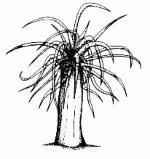 | Anemone | |||
| COMMON HABITAT | All Hawaiian waters from tide pools to deep offshore waters. | |||
| PREVENTION | Avoid direct contact with skin. While tide pooling use footwear and don't put fingers/hands into holes and crevices. | |||
| INJURY MECHANISM | Tentacles have stinging cells that are used for catching prey. | |||
| SIGNS AND SYMPTOMS | Burning and itching sensation, redness and swelling where contact was made. Severe Reaction: may include shortness of breath; loss of consciousness. | |||
| FIRST AID TREATMENT | Rinse thoroughly with fresh or salt water. Apply ice for pain. IMMEDIATE medical attention may be required for severe reactions. | |||
 | Barracuda | |||
| COMMON HABITAT | Open waters/bay areas in the shadows, under floating objects. | |||
| PREVENTION | Don't wear shiny objects. They are attracted to reflective things that look like dinner. | |||
| INJURY MECHANISM | Sharp jagged teeth with strong tearing jaws. | |||
| SIGNS AND SYMPTOMS | Slashed and jagged tears in your skin. | |||
| FIRST AID TREATMENT | Stop bleeding with pressure. Get medical help. | |||
 | Cone Snail | |||
| COMMON HABITAT | Tide pools, sandy areas, shallow to deep offshore waters. | |||
| PREVENTION | Do not handle (even with gloves), especially near tip. | |||
| INJURY MECHANISM | Poisonous, dart-like mechanism near tip used for stunning and killing fish and invertebrates. | |||
| SIGNS AND SYMPTOMS | Stinging, burning pain, numbness, coma or cardiac arrest. | |||
| FIRST AID TREATMENT | Scrub the wound. Get medical help for severe reactions. | |||
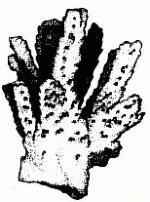 | Coral | |||
| COMMON HABITAT | All depths. | |||
| PREVENTION | Protect feet while tide pooling or reef walking. Don't touch coral. Stay out of rough shallow waters. | |||
| INJURY MECHANISM | Sharp edges cause abrasions and lacerations. | |||
| SIGNS AND SYMPTOMS | Bleeding, torn skin causing irritation, mild swelling. | |||
| FIRST AID TREATMENT | Stop any bleeding with pressure, clean thoroughly with soap and water. Get medical help for deep cuts and embedded pieces. | |||
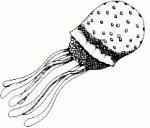 | Jellyfish | |||
| COMMON HABITAT | Very common in all water bodies. Box jellyfish, Carybdea alata and Carybdea rastonii, regularly swarm to Hawaii's Leeward shores 9 to 10 days after the full moon. Carybdea alata cause the most "trouble" for humans in Hawai`i. | |||
| PREVENTION | Don't go into areas where sighted, or if dead ones are seen on the beach. Observe posted signs. | |||
| INJURY MECHANISM | Stinging tentacles. | |||
| SIGNS AND SYMPTOMS | Stinging, burning, redness, swelling of lymph nodes. Severe reaction: difficulty with breathing and cardiac arrest. Occasional long welt lines. | |||
| FIRST AID TREATMENT | Douse with vinegar. Apply ice for pain. IMMEDIATE medical attention may be required for severe reactions. | |||
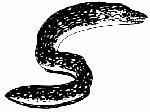 | Moray Eel | |||
| COMMON HABITAT | Rocky areas, in holes, under rocks, crevices and tide pool ledges. | |||
| PREVENTION | Keep hands out of rocky areas, holes and crevices. Use stick to probe. Dead fish, blood or bait will bring them out of their holes. | |||
| INJURY MECHANISM | Razor sharp teeth, powerful jaws. | |||
| SIGNS AND SYMPTOMS | Bleeding, severe muscle damage, but more commonly tendon and nerve damage. | |||
| FIRST AID TREATMENT | Stop bleeding with pressure, clean thoroughly. Get medical help (guard against infection). | |||
 | Needle Fish | |||
| COMMON HABITAT | Near surface in bay areas and open waters. | |||
| PREVENTION | Use caution when night lighting/fishing. | |||
| INJURY MECHANISM | Long pointed jaw. | |||
| SIGNS AND SYMPTOMS | Pointed jaw may puncture and break off leaving a puncture wound. | |||
| FIRST AID TREATMENT | If point doesn't break off, clean with antiseptic if stabbed. If point breaks off do not remove it. Stop any bleeding with pressure. Get medical help immediately! | |||
| Portuguese Man-of-War (Bluebottle - Physalia spp,) | ||||
| COMMON HABITAT | Open ocean. Bays and beaches during strong onshore winds. | |||
| PREVENTION | Avoid areas where they frequent. Usually found when winds blow in from the ocean onto land. Observe posted signs. | |||
| INJURY MECHANISM | Long blue, threadlike tentacles. | |||
| SIGNS AND SYMPTOMS | Stinging, burning, redness, swelling of lymph nodes. Severe reaction: difficulty with breathing and cardiac arrest. Long welt lines. | |||
| FIRST AID TREATMENT | Pick off any visible tentacles. Rinse with fresh or salt water. Apply ice for pain. IMMEDIATE medical attention may be required for severe reactions. | |||
See also: First Aid for PORTUGUESE MAN-OF-WAR STINGS
 | Scorpion Fish | |||
| COMMON HABITAT | Protected ledges, rocky areas, and shallow inshore areas. | |||
| PREVENTION | Do not handle. Keep out of crevices and places into which you can't see. | |||
| INJURY MECHANISM | Toxic dorsal, pelvic, and anal spines. | |||
| SIGNS AND SYMPTOMS | Punctured skin, extreme pain, throbbing for hours. Sometimes convulsions and cardiac arrest; but rarely, in Hawai`i, such very serious reactions. | |||
| FIRST AID TREATMENT | Immerse in hot water to tolerance. Get medical help for serious reactions or for infection. | |||
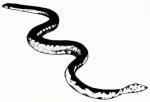 | Yellow Bellied Sea Snake | |||
| COMMON HABITAT | Seldom found in Hawaiian waters. | |||
| PREVENTION | If sighted stay clear, leave the area. Report to the Waikiki Aquarium. | |||
| INJURY MECHANISM | Venom through fangs. | |||
| SIGNS AND SYMPTOMS | Paralysis, severe pain, cardiac arrest. | |||
| FIRST AID TREATMENT | Keep the victim calm and warm. Transport to a medical facility or call 911 for an ambulance, IMMEDIATELY. | |||
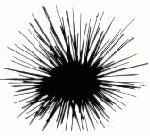 | Sea Urchin | |||
| COMMON HABITAT | Shallow reef areas to 100 foot depths. | |||
| PREVENTION | Wear foot protection. Don't walk on rocky areas with poor visibility. Do not handle! | |||
| INJURY MECHANISM | Long, extremely brittle spines. | |||
| SIGNS AND SYMPTOMS | Throbbing pain. Purplish discoloration. | |||
| FIRST AID TREATMENT | Pull out protruding spines. If spines(s) is/are in a joint, nerve, or when wound is infected - get medical help. | |||
 | Shark (See our Shark pages.) | |||
| COMMON HABITAT | Shallow inshore waters to open ocean. | |||
| PREVENTION | Avoid murky waters. Leave water if sighted, if you have an open cut or are pulling a string of speared fish. Try not to look like food. | |||
| INJURY MECHANISM | Jaws and rows of razor sharp teeth. Abrasions from sandpaper-like skin. | |||
| SIGNS AND SYMPTOMS | Severe bleeding, injury to or excision of muscle, bone and appendages. | |||
| FIRST AID TREATMENT | Control bleeding with pressure. Transport to medical facility or call 911 for an ambulance for severe shark attack bites. | |||
  | Squid or Octopus | |||
| COMMON HABITAT | Squid - open ocean, free swimming. Octopus - on bottom in rocky areas from tide pools to deep waters. | |||
| PREVENTION | Do not handle. | |||
| INJURY MECHANISM | Beak-like teeth. | |||
| SIGNS AND SYMPTOMS | Bleeding, mild stinging and throbbing. | |||
| FIRST AID TREATMENT | Stop bleeding with pressure, clean thoroughly with soap and water. Get medical help for deep cuts and embedded beak pieces. | |||
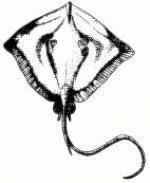 | Stingray | |||
| COMMON HABITAT | Shallow, sandy areas to deep oceans. | |||
| PREVENTION | Shuffle feet when walking in shallow inshore waters. Stay clear of disturbed (swimming) ray. Do Not Molest! | |||
| INJURY MECHANISM | Tail with poisonous barb near base of body. | |||
| SIGNS AND SYMPTOMS | Lacerations and severe pain. Punctures in abdomen or chest are very serious - a medical emergency. | |||
| FIRST AID TREATMENT | Stop any bleeding, clean thoroughly with mild soap and water. Immerse in hot water to tolerance for pain. Get medical treatment for deep cuts and embedded barb pieces. Do not try to remove pieces yourself - get medical help. | |||
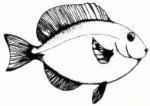 | Surgeonfish | |||
| COMMON HABITAT | Wave zone to 150 foot depths. | |||
| PREVENTION | Take care in handling. | |||
| INJURY MECHANISM | Spine and knife-like razors near tail. | |||
| SIGNS AND SYMPTOMS | Throbbing pain, itching, bleeding and numbness. | |||
| FIRST AID TREATMENT | Stop bleeding with pressure, clean thoroughly with soap and water. Get medical treatment for deep cuts and embedded spine pieces. Do not try to remove pieces yourself. | |||
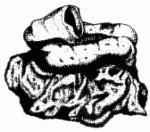 | Tube Worm | |||
| COMMON HABITAT | Shallow reef areas. | |||
| PREVENTION | Use protective footwear and gloves. | |||
| INJURY MECHANISM | Hardened, razor sharp opening to worm's shelter. | |||
| SIGNS AND SYMPTOMS | Circular cut with fragments that may be embedded. Bleeding. | |||
| FIRST AID TREATMENT | Stop bleeding with pressure, clean thoroughly with soap and water. Get medical treatment for deep cuts and embedded pieces. Do not try to remove pieces yourself. | |||
